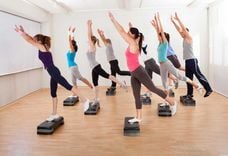This is an automatically translated article.
In athletics, short and medium distance running is one of the most loved and chosen training activities. If in the short distance running technique, the practitioner needs to pay attention and put all their strength to achieve the fastest speed, then the middle distance running needs more endurance, speed and good technique. The following article will help you better understand as well as guide the technique of running medium and short distances properly.
Running is a simple subject but requires concentration, applying the right technique to achieve the desired results. The technique of running short or medium distance is divided into different stages.
1. Short distance running technique
Short distance running also known as sprint. Short distance running technique
includes the following 4 basic stages:
1.1. Start Stage This is the first stage before starting the run. There are two ways to start: low starting and high starting.
With a low start Technique: Runners need to stand straight in front of the pedals and then slowly lower down, arms forward and eyes straight.
Then, slowly shift your weight forward, lift your butt up, shoulders forward to get ready. At the signal to run, start to put all your strength, running forward with long strides.
With a high starting position The advantage of this position is comfort. Keep the upper body slightly forward 1, the head and body are kept straight, the arms can be relaxed.
1.2. Mid-distance running technique To ensure proper running technique, the mid-distance running period plays a very important role. At this stage, attention needs to be focused, maintaining the speed that was previously maintained.
Running speed mainly depends on the efficiency of each back kick of the 2 legs. Therefore, it is necessary to maintain the back pedal movement to ensure fast, strong and right direction. At each time your feet touch the ground, you need to move your shoulders and hips forward strongly, holding your hands lightly.
One way to save energy on both legs is that the runner needs to pedal in the right direction, and at the same time, coordinate the back pedal with the tilt of the upper body and the movements of both hands. The muscles involved in the rear kick need to be properly rested, so flex your shins inertia after the foot leaves the ground. With this technique will help the practitioner bring the foot forward at a faster speed.
To save energy, limit the frontal reaction by choosing the foot position in front near the drop point of the body's center of gravity.
During running, the hand movements need to be staggered compared to the running steps of the legs. Swing your arms so that you don't lose your body balance and help you adjust the frequency of your steps.
A rhythmic combination of running speed with breathing steps. If the running speed is not great, you can take three inhalations and three exhales. If running at a high pace, the breath needs to be faster with 2 inhalations and 2 exhalations.
Need to breathe through both mouth and nose, breathe deeply, actively. Take deep breaths right from the start to help keep your breathing steady and avoid premature lack of oxygen that causes exhaustion.

Để đảm bảo kỹ thuật chạy cự ly ngắn đúng cách, giai đoạn xuất phát rất quan trọng.
1.3. When you are close to the finish line, the best short-distance running technique is to put all your energy into maintaining speed, focusing your energy at a distance of 15-20m when you are close to the finish line. This stage should lean more forward to help take advantage of the effect of the back pedal.
Because the completion of a short distance of 100m is only counted when a part of the upper body touches the straight plane containing the finish line. Therefore, in the last steps, you should actively bend your upper body forward to be able to touch your chest to the goal line. Alternatively, you can reach the finish line with your shoulders by combining a forward flexion of your upper body and a rotation of your torso so that one shoulder reaches the finish line.
Note: When running to the finish line, the practitioner needs to run a few more steps to help keep the body in a state of balance, avoiding sudden stops will lose balance causing falls and collisions with others.
2. Medium distance running technique
Regular average distance running distance is usually longer than short distance running, also close to the distance of long distance running, the running length is from 500 - 2,000m.
Medium distance running techniques help runners increase endurance, maintain running speed, increase lung volume, effectively burn calories, improve cardiovascular.
Mid-distance running also requires runners to have endurance, speed and the right way. The middle distance technique also has 3 main stages, including:
2.1. Starting Phase
Stand in the right position with your dominant foot close to the line and the other foot behind. Slowly lower your body, lean forward slightly, eyes straight. Let your arms stagger with your feet.
When you hear the command, put all your acceleration to achieve the desired speed. However, before moving to the mid-range phase, it is necessary to slow down.
2.2. Mid-range running phase
In the mid-interval stage, pay attention to running with the upper body leaning slightly forward, neck and face relaxed naturally. For running legs, because this is the middle stage where you need to save energy, pay attention to pedal in the right direction while your hands hit the pedals evenly.
2.3. The finish line
At any distance, the finish is a sprint. Therefore, this is the time to put all your strength into it by pushing to increase the number of running steps, leaning forward, arms hitting hard to help create force to move the body quickly in the last steps. However, if you feel your body is tired, you should gradually switch to running slowly, do not stop running suddenly because it can be harmful to health.
3. How to improve running technique?
Running for short distances, increasing distanceThis is an effective method to increase body speed gradually. When the body adapts to the intensity of running, it will help the running speed to be faster, and at the same time, the endurance will be better. Increase the intensity of your interval running by gradually reducing the recovery time between each jog, running longer distances.Inhale – exhale through both the mouth and nose This helps to keep the breathing rate stable, the body has enough oxygen supply when jogging and removes carbon dioxide quickly.
Belly breathing when jogging Deep belly breathing helps increase the flow of oxygen-rich blood to the organs, preventing fatigue for longer. Belly breathing also has a calming effect, improves focus, and boosts mental clarity during a run.
Please dial HOTLINE for more information or register for an appointment HERE. Download MyVinmec app to make appointments faster and to manage your bookings easily.













